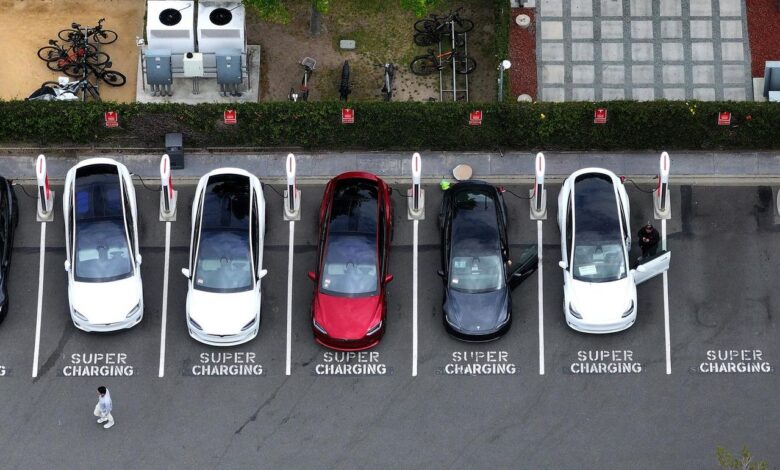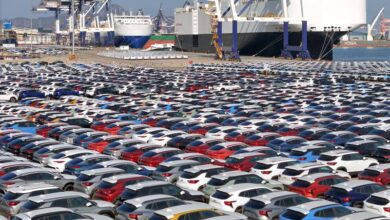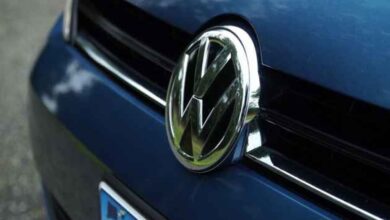Is Tesla In Turmoil Or In Its Teething Stage?

Tesla announced plans to lay off nearly 3,000 workers at facilities in the San Francisco Bay Area in … [+]
Tesla, the electric vehicle (EV) pioneer, finds itself in a precarious position. Headlines scream of Full Self-Driving (FSD) limitations, with the NHTSA (National Highway Traffic Safety Administration) investigating multiple Autopilot crashes. Internally, the company grapples with layoffs and then its own supercharger network team layoffs, gigafactory delays, and facing price pressure from BYD and other Chinese competitors. Is this a temporary setback for the visionary automaker or a much bigger structural issue facing the industry?
FSD: A Dream on Autopilot?
Musk seeks to launch Fully autonomous driving (FSD) software in China, in Suqian, Jiangsu province, … [+]
While CEO Elon Musk has been touting the virtues of FSD promising several times since 2017 that FSD will be fully operational, it seems though that Tesla’s dream of self-driving cars has hit more than its fair share of bumpy turbulence. The limitations of FSD ( and its hardware technology stack) are becoming increasingly apparent, raising concerns about safety and prompting ongoing NHTSA investigations. The recent agreement with Chinese automated vehicle company Baidu to allow FSD use in China with limitations further highlights the technology’s current state and the ensuing geopolitics behind it.
Beyond the Driver’s Seat: A Company in Flux
Tesla’s internal combustion isn’t faring much better. Layoffs across the company, including the supercharger network team, raise questions about efficiency and future plans. Gigafactory delays disrupt production schedules, while a shrinking workforce struggles to meet demand facing a price war with aggressive Chinese competitors like BYD.
Tesla’s struggles aren’t happening in a vacuum. While US and European OEMs (Original Equipment Manufacturers) haven’t faced similar large-scale EV recalls, they are grappling with their own challenges. Legacy automakers are struggling to transition their manufacturing base to EVs, facing their own supply chain issues and delays in electric vehicle rollouts. This slow pace allows Chinese manufacturers to gain global traction at accelerating speed outside the North American market.
A Volvo (Owned by Geely) EX30 model car is displayed at the Beijing Auto Show in Beijing (Photo by … [+]
The Chinese EV market is a different story. Backed by government incentives and a robust domestic supply chain, Chinese EV manufacturers like BYD are ramping up production and aggressively surrounding the US market. The Volvo acquisition by Geely is a prime example – Volvo’s new line of electric cars are poised to be some of the most affordable EVs in the US. This price pressure adds another layer of complexity for Tesla and the incumbents.
Beyond the Car: Tesla’s AI and Robotics Gambit
Tesla’s ambitions extend far beyond automobiles. Their investments in robotics, energy storage and AI position them as a tech company with a future in clean energy solutions and automation. However, Tesla remains, at its core, a vehicle manufacturer. The complexities of maintaining high quality, safety, and affordability across a large product range are ever-present. Balancing these three factors is the ultimate challenge for Tesla, the incumbent OEMs and for any startup or new company hoping to win in the competitive EV landscape.
Steering Towards a Sustainable Future: An Industry Effort
Major automakers announced plans to increase the number of high-powered electric vehicle chargers in … [+]
Tesla’s struggles serve as a cautionary tale for the entire OEM industry. Safety concerns surrounding Autopilot necessitate prioritizing robust safety measures across the board. Similarly, navigating the supply chain crisis and fostering a skilled workforce requires industry-wide solutions.
While Tesla’s current turmoil is grabbing headlines, the bigger picture remains one of immense opportunity. The global EV market is on an upswing, having passed the critical threshold for driving mass adoption in dozens of markets driven mostly by government incentives and low cost of operation. It seems that Tesla is going through a series of growing pains and in order to regain its footing it will need to be laser focused on prioritizing safety, optimizing production, and weathering the competitive storm. All signs appear to show that it can reclaim its leadership position, the question is will it?
The US and European OEMs need to accelerate their EV rollouts and co-invest with energy companies to bolster a resilient grid, foster renewable energy storage and charging infrastructure innovation. The speed of the electric vehicle revolution (two, three or four wheel) depends heavily on a united effort from OEMs, governments, utilities, and cities.
Ultimately, the success of electric mobility hinges on a collective effort – a global race where every player must prioritize safety, affordability, and sustainability to create a win for us.



